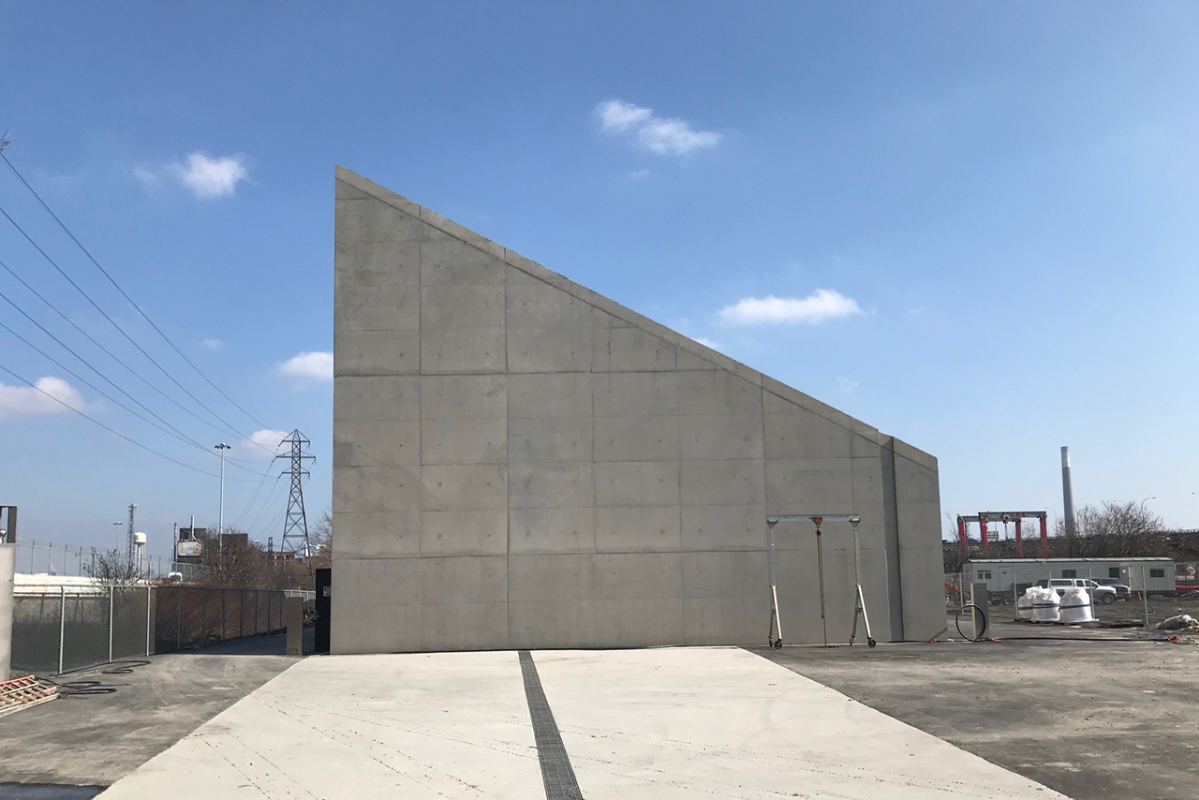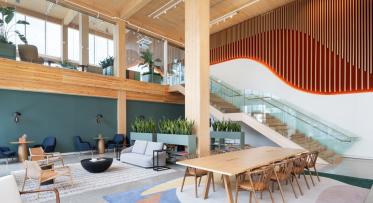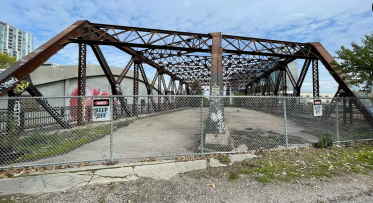Toronto is Getting the Treatment it Deserves: Stormwater Management System is Up and Running
With the completion of the Cherry Street Stormwater Management Facility in March 2021, a key component in the larger Stormwater Management System is now in place. Image courtesy of gh3*
By: Kaleigh Wisman
As we revitalize the post-industrial waterfront, we consider the big picture. Among the many considerations are: How can we best serve local communities, our economy and the environment as we build the foundation for new neighbourhoods to take root and flourish?
Managing and treating stormwater created by rain and melting snow may not be top of mind for most people but it has been a long-standing priority for us. Planning and construction of an innovative and complex Stormwater Management System has been underway for many years. This system is an essential network of infrastructure that will serve our current and future waterfront communities, making them greener and safer places to live, work and play. The system is comprised of the completed Cherry Street Stormwater Management Facility (pictured above) and the ultraviolet treatment facility at Sherbourne Common (that directs water through the Light Showers art sculptures) along with the soon-to-be-built In-Water Pipes along the Water’s Edge Promenade.
The integrated system protects communities from flooding by safely capturing and conveying stormwater. It also removes pollutants before directing water to the lake, laying the groundwork for a cleaner waterfront that can support sustainable new communities.
Environmental Impact – cleaner water, fewer floods

The Stormwater Management System serves East Bayfront, the West Don Lands, and will serve the future communities in the Keating Channel Precinct.
Stormwater runoff is a big urban challenge. When we receive large amounts of rain or snowmelt, some water gets absorbed into the ground, but the water that doesn’t flows along the city’s hard paved surfaces, picking up small pieces of sediment and debris before finding its way to a storm sewer. This untreated runoff can end up flowing directly into our lakes, streams and rivers and is one of the lead sources of pollution to our waterways.
By treating stormwater runoff, we will prevent a significant amount of pollutants from entering our lake—protecting plants, animals and aquatic life, our city’s source of drinking water and an increasingly popular destination for folks to swim, paddle and play.
This Stormwater Management System will also help prevent flooding. When there is a surge of stormwater runoff and no method to collect and treat it, large amounts of water can overwhelm our existing sewer system and cause areas to flood. With the advent of this new system, we are able to improve storage capacity and protect areas of the waterfront that were previously at risk of flooding.
When we planned the communities this system will serve, we knew that creating a wide-reaching Stormwater Management System was vital in achieving our environmental goals as well as laying the groundwork for great new neighbourhoods and communities to thrive. Planned in line with Waterfront Toronto’s Resilience and Innovation Framework for Sustainability, this system addresses both day-to-day stormwater management, as well as extreme weather events, ensuring it will function in challenging future conditions.
Cherry Street Stormwater Management Facility
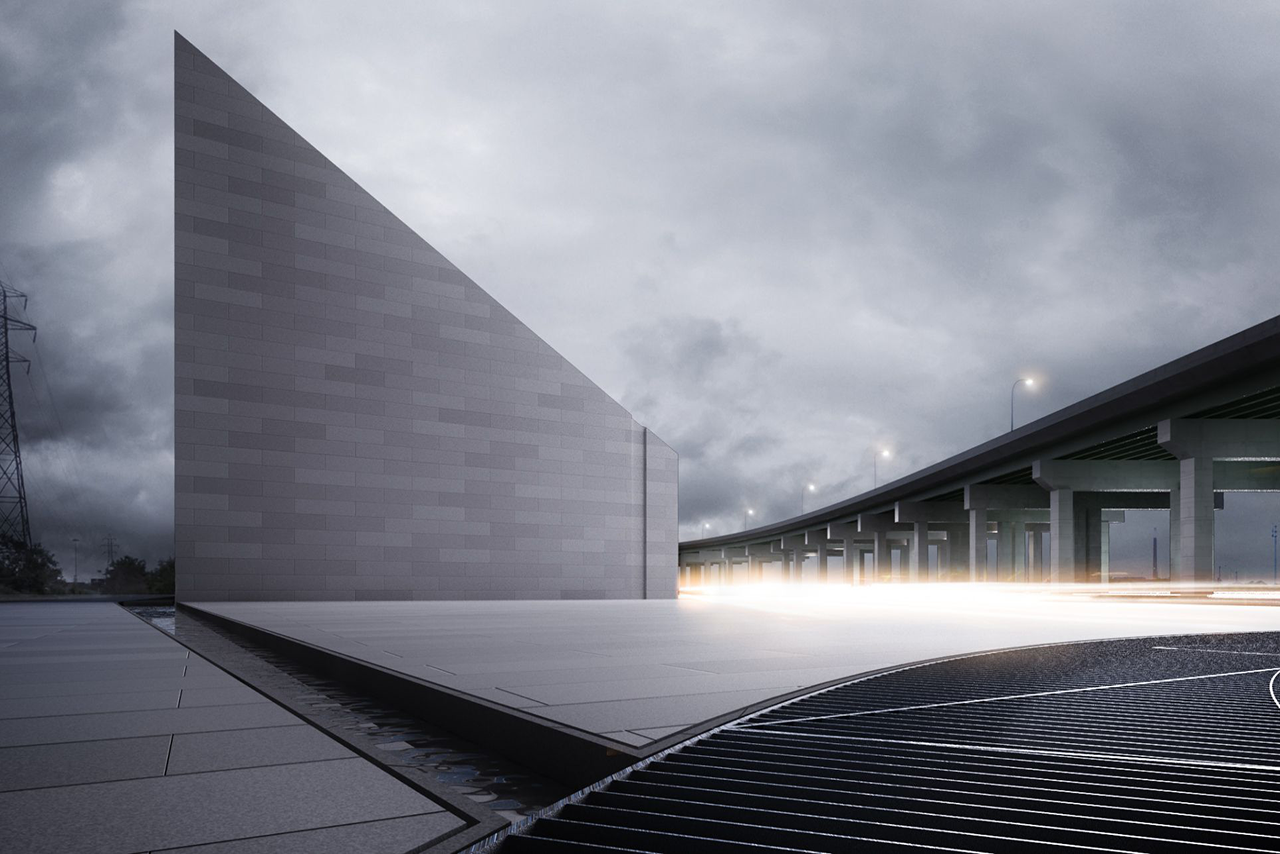
Located at the northeast corner of Cherry Street and Lake Shore Boulevard East, the Cherry Street Stormwater Management Facility is now operational. Its twin treatment chambers will have the capacity to treat 1,450 litres of water per second. Image courtesy of gh3*
The Cherry Street Stormwater Management Facility, funded by and built in partnership with the City of Toronto, is an integral part of the Stormwater Management System. Having begun operations in March 2021, the larger system is now collecting and treating thousands of litres of stormwater before discharging clean water into Lake Ontario.
The facility uses state-of-the-art technology, exceeds the City of Toronto's Wet Weather Flow Management Guidelines for stormwater treatment and meets Waterfront Toronto’s broader commitment to protecting and enhancing the natural environment. In the first step of an innovative three step treatment process, an oil and grit separator removes sediment, debris and oil from water collected by the larger system. Next, the water is clarified as fine suspended solids are removed through a process known as ballasted flocculation. This process allows the system to make highly-efficient use of space and is more economical when compared to constructing traditional sediment ponds or tanks on contaminated sites. Finally, the water is disinfected using ultraviolet (UV) light before being released into the Keating Channel.
Although construction of the Cherry Street Stormwater Management Facility has just been completed, it has already attracted several design accolades, including: 1 of 10 Striking Architecture Projects Shaping Design in 2021 from Azure Magazine, one of the “Ten Coolest New Buildings to Gawp at this Year” from the Times of London in 2021, as well as a Canadian Architect Magazine Award of Excellence in 2011.
Coming Soon - In-Water Pipes in East Bayfront
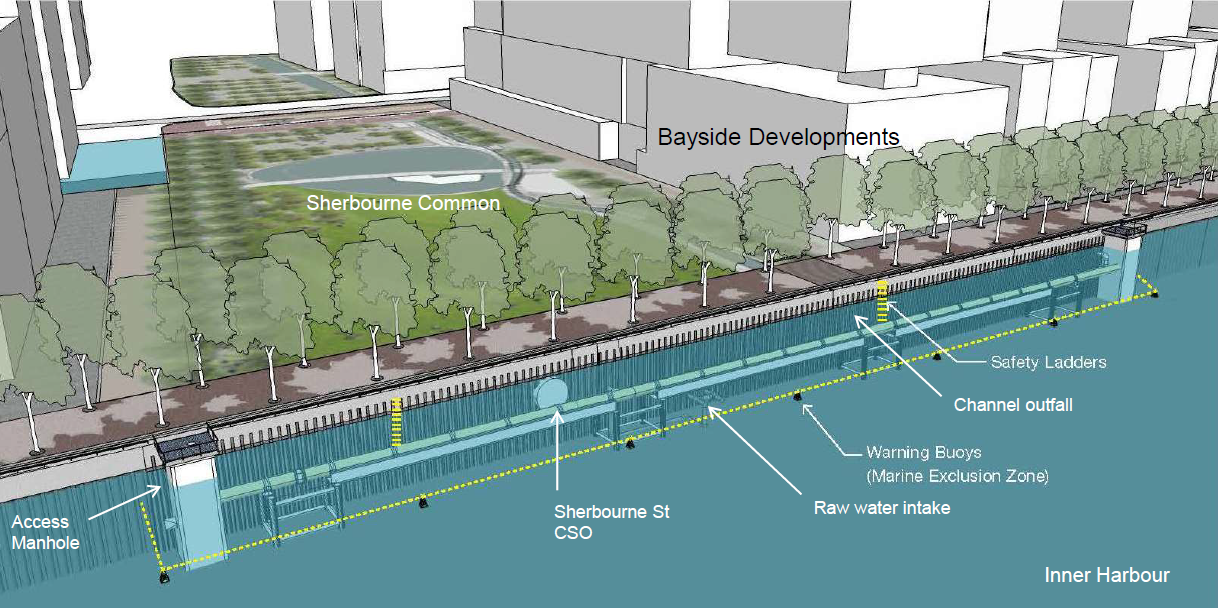
When connected to the larger Stormwater Management System, the In-Water Pipes will convey even more stormwater runoff to the Cherry Street Stormwater Management Facility to be treated.
The In-Water Pipes being installed along the Water’s Edge Promenade in East Bayfront will be the final piece of the Stormwater Management System. When the pipes are complete by the spring of 2022, they will convey stormwater from the Dockside area of East Bayfront to the Cherry Street Stormwater Management Facility.
Work on the In-Water Pipes is expected to commence this summer. For safety, access to the Water’s Edge Promenade will be narrowed while the pipes are being installed. Please keep an eye on our social channels and sign up for our newsletter to receive construction updates about the impacts of this work.
When the In-Water Pipes are complete, our plans include building a boardwalk extension over the pipes, increasing the width of the Water’s Edge Promenade at the foot of Sherbourne Common. We hope to provide more information on this in the coming months.

